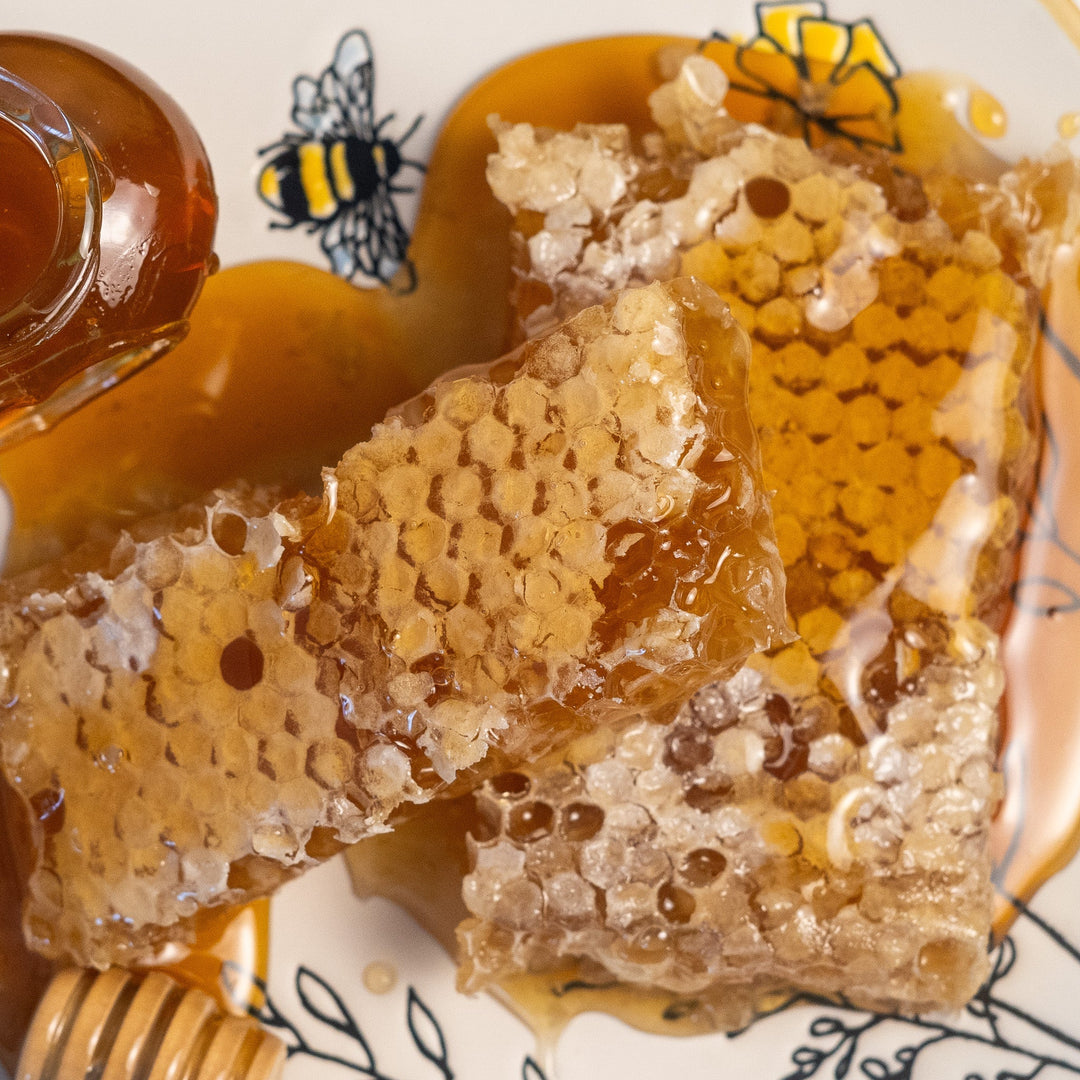Honey in Nature: Why Raw Honey is the Purest Form
When you think of honey, you might picture golden sweetness drizzling from a wooden dipper or glistening in a jar on your kitchen shelf. But honey is more than a delicious treat—it's a miraculous gift from nature. And how it’s handled after it leaves the hive makes all the difference.
In this post, we’ll explore what makes honey raw, why that matters, how temperature plays a key role in preserving its natural benefits, and how to keep your honey fresh at home. Whether you’re new to raw honey or a longtime fan, this guide will help you understand how to spot the real deal—and why our honey at Aquidneck Honey is the purest you’ll find.
What Is Raw Honey?

Raw honey is honey in its most natural state—just as the bees made it. It’s unheated, unpasteurized, and minimally filtered. This means it retains all the naturally occurring enzymes, antioxidants, vitamins, minerals, and antibacterial properties that bees infuse into every drop.
Unlike commercial honey, which is often pasteurized and ultra-filtered to improve shelf stability and appearance, raw honey remains rich in beneficial compounds that support wellness.
Raw vs. Pasteurized Honey: What’s the Difference?
| Raw Honey | Pasteurized Honey |
|---|---|
| Unheated, unpasteurized | Heated to high temps (often 160°F or more) |
| Contains natural enzymes, pollen, antioxidants | Many beneficial compounds are destroyed by heat |
| Can crystallize over time (a natural process) | Less likely to crystallize quickly due to filtration |
| Cloudy, creamy, or opaque appearance | Clear and uniform in color |
Pasteurization is the process of heating honey to high temperatures to kill yeast cells and delay crystallization. While this can improve shelf appeal, it also strips the honey of many of its health benefits.
What Temperature Is Best to Store Honey At Home?
To keep your raw honey fresh, store it in a cool, dry place between 50°F and 70°F (10°C–21°C). A pantry or cabinet away from direct sunlight is ideal. No need to refrigerate—it can actually speed up crystallization.
What’s the Temperature in a Natural Beehive?
Inside a healthy hive, bees keep the brood nest at a consistent 95°F (35°C). This warmth helps the colony thrive but doesn’t harm the honey, as it's naturally stored in wax comb and not subjected to excessive heat.
At What Temperature Does Honey Begin to Crystallize?
Crystallization is a natural process and a good sign your honey is raw and unprocessed. Honey typically begins to crystallize when stored below 50°F (10°C). Factors like the glucose-to-fructose ratio and presence of pollen also affect the rate.
👉 Read more about crystallization and how to revive crystallized honey in our previous post here
When Does Honey Begin to Lose Its Nutrients?
One of the biggest concerns with heating honey is the loss of natural enzymes and antioxidants—the very things that make raw honey so beneficial.
-
Above 95°F (35°C) – Enzymes begin to break down gradually.
-
Around 104°F (40°C) – Antioxidants and antibacterial properties begin to decline.
-
Above 118°F (48°C) – Most enzymes are significantly degraded.
-
Above 160°F (71°C) – This is when honey is pasteurized. Most health benefits are lost.
In short: the hotter the honey, the fewer the benefits.
So, What’s the Best Way to Reheat Raw Honey?
If your honey has crystallized and you want to return it to a smooth consistency, gently warm it in a bowl of warm (not boiling) water. Aim to stay under 95°F if possible. Avoid microwaving, as the heat is uneven and often too high.
How to Tell If Honey Is Truly Raw
Look for these signs:
-
A creamy or cloudy appearance
-
Seasonal variations in texture and flavor
-
Crystallization over time
-
Labels that say raw, unfiltered, unpasteurized
-
Source transparency—like ours!
At Aquidneck Honey, we never pasteurize or overly filter our honey. We keep it just as the bees intended—pure, raw, and full of life.
Why Raw Honey Is Better (And Why We Never Alter It)
Raw honey:
-
Contains over 30 bioactive plant compounds
-
Offers antibacterial, antifungal, and anti-inflammatory properties
-
Supports immune health, digestion, and wound healing
-
Is a natural prebiotic, feeding healthy gut bacteria
When honey is heated and processed, many of these qualities are lost. That’s why we protect every batch from unnecessary heat and keep it as close to nature as possible.
Ready to Taste the Difference?
👉 Shop our 100% pure and raw pesticide free honey
Whether you’re adding it to tea, spreading it on toast, or spooning it straight from the jar, you deserve honey in its purest, most natural form.
Let us know in the comments: Have you ever tried raw honey straight from the comb? 🍯




